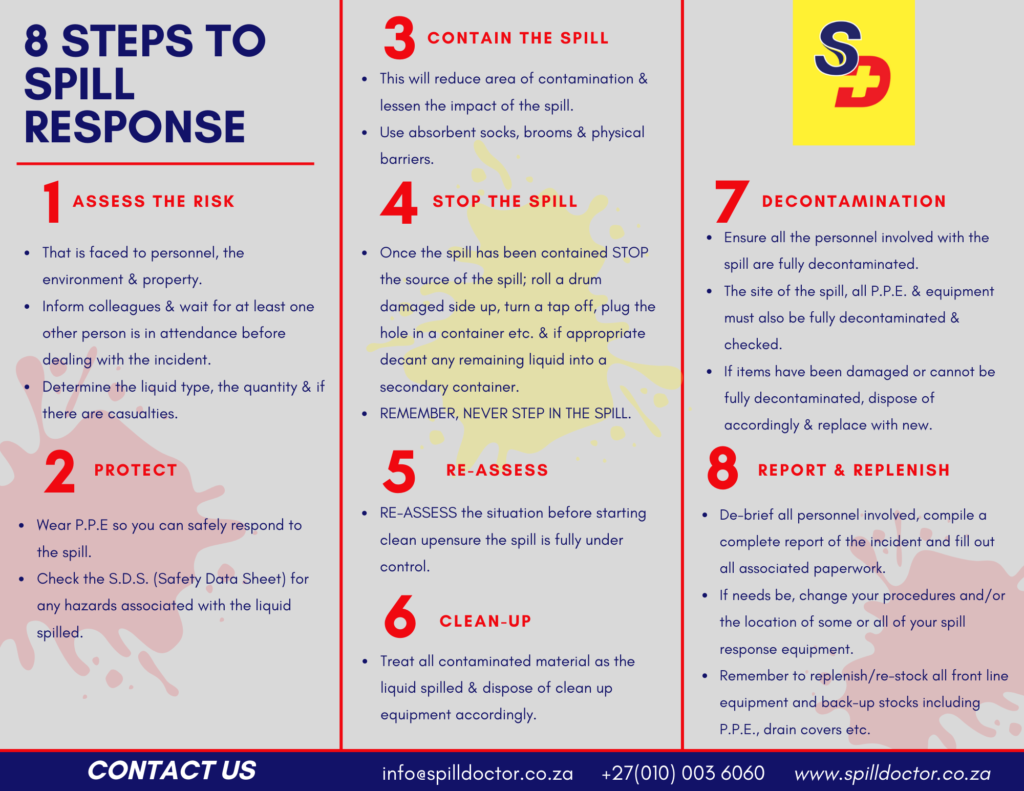What are the 3 steps to respond to a spill?

When a spill occurs, it is crucial to respond quickly and effectively to minimize the damage and ensure the safety of individuals and the environment. To do so, a well-defined spill response plan is essential. In this article, we will unveil the three essential steps to respond to a spill.
Step 1: Assess the Situation
The first step in responding to a spill is to assess the situation. This involves determining the type and severity of the spill, as well as identifying any potential hazards or risks associated with it. Assessing the situation allows you to develop an appropriate response plan tailored to the specific spill.
Step 2: Contain and Control the Spill
Once the situation has been assessed, the next step is to contain and control the spill. This involves taking immediate action to prevent the spill from spreading and causing further damage. The appropriate containment methods will vary depending on the type of spill, but may include using absorbent materials, barriers, or specialized equipment.
Step 3: Clean up and Dispose of the Spill
After the spill has been contained and controlled, the final step is to clean up and dispose of the spill. This should be done in accordance with local regulations and best practices for handling hazardous materials. It is important to use appropriate personal protective equipment and follow proper decontamination procedures during the cleanup process.
Conclusion
Responding to a spill requires a systematic approach to ensure the safety of individuals and the environment. By following the three essential steps of assessing the situation, containing and controlling the spill, and cleaning up and disposing of the spill, you can effectively respond to spills and mitigate their impact.
Frequently Asked Questions
Q1: What types of spills require a response?
Any spill that poses a risk to human health, the environment, or property should be responded to promptly. This includes spills of hazardous chemicals, oils, or other substances that can cause harm.
Q2: How should I assess the severity of a spill?
The severity of a spill can be assessed by considering factors such as the volume and toxicity of the spilled substance, the proximity to sensitive areas, and the potential for the spill to spread or cause further damage.
Q3: What are the appropriate containment methods for different types of spills?
The appropriate containment methods for spills will depend on the specific characteristics of the spilled substance. For example, absorbent materials may be used for liquid spills, while barriers or dikes may be used to contain spills of solid or granular materials.
Q4: How should I dispose of hazardous materials after a spill?
Hazardous materials should be disposed of in accordance with local regulations and guidelines. This may involve contacting a licensed waste management company to handle the proper disposal of the materials.

Leave a Reply